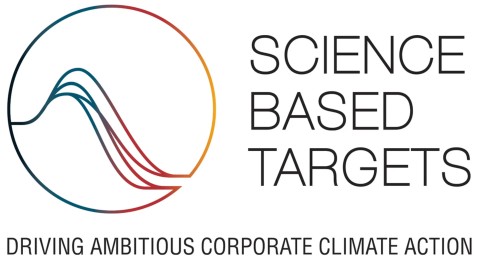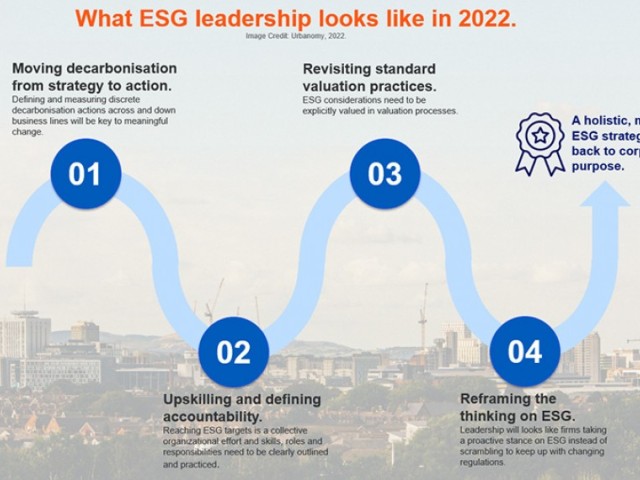By Felix Briaud, Urbanomy
18/11/2024
18/11/2024
Those with a keen interest in French literature will have grasped the reference to Gargantua, François Rabelais's second novel published in 1534.
But therein ends the analogy.
Now, almost 500 years later, the Science Based Targets initiative (abbreviated SBTi) is not calling, as Rabelais did, for a reform of education but for a much more pragmatic cause: the adoption by companies of greenhouse gas emission reduction targets in line with scientific knowledge on global warming.
Put simply, defining an environmental strategy is good; ensuring it contributes to achieving a pathway of 1.5°C maximum increase in average global temperature by the end of the century is even better.
It all began with COP21
The SBT initiative is already nine years old and it came to life in 2015, in the wake of the 21st Conference of the Parties on Climate Change, which led to the Paris Agreement. This was an historic agreement - the first time since the Kyoto Protocol in 1997 that the world's largest economies agreed on a series of commitments to tackle climate change.
At the forefront of these commitments was the aim of limiting global warming by 2100 within the range of 1.5°C to 2°C above pre-industrial levels - i.e. the second half of the 19th century.
How did the 2015 United Nations Climate Change Conference manage to achieve consensus? By establishing the principle of collaboration and voluntary commitments, through Intended Nationally Determined Contributions, or INDCs, which later evolved into NDCs, Nationally Determined Contributions.
The purpose of these NDCs is to be submitted by the Agreement's 196 signatories and then updated every five years. Their purpose is to achieve the long-term objective of a maximum temperature increase of 1.5°C by the year 2100.
It's worth noting that, according to the NDC register we checked early this year, 179 of the 196 signatory countries to the Paris Agreement - 92% of them - are currently complying with the commitment made at COP21 in 2015 to update their contributions at least once every five years.
And it was the very same year that COP21 took place that a partnership was formed between the Carbon Disclosure Project (CDP), the World Wide Fund for Nature (WWF), the United Nations Global Compact and the World Resources Institute (WRI, an organisation that also co-founded the GHG Protocol, the regulatory framework for measuring greenhouse gas emissions) to form the Science Based Targets Initiative, or SBTi.

The initiative's objective is clear: through the development of standards, tools and support, it seeks to convince companies and financial institutions to make the same commitment to playing a role in the climate crisis that governments made through NDCs.
Nine years later, the initiative is paying off
In practical terms, the SBT initiative is the body that approves - or rejects - the targets submitted by companies to the Carbon Disclosure Project (CDP), one of the SBTi's four co-founders.
According to the Science Based Targets Initiative dashboard, more than 9,500 companies have already taken action through the submission of greenhouse gas emission reduction targets. The SBT initiative has validated just over 6,600 statements for which it considers that the targets are consistent with scientific knowledge. This represents a success rate of 69%, according to data reviewed in November 2024.
In order to establish science-based targets, companies are required to :
- choose a reference year that reflects its actual greenhouse gas emissions (which cannot be prior to 2015)
- choose a target year for these emissions (more on this below)
- ensure that this target is consistent with the company's greenhouse gas emissions inventory
- select the most ambitious target, using the SBTi modelling tools
In order to establish a short-term target, a firm wishing to commit to an SBTi rubber-stamped process also needs to meet certain criteria:
-
The targets must cover a minimum of 5 years and a maximum of 10 years from the date the commitment is submitted for validation
-
The emission reductions for scopes 1 and 2 must be in line with a decarbonisation pathway of +1.5°C at most
Scope 1 refers to a business's direct emissions of greenhouse gases, such as heating its premises, fuel consumption by company vehicles or refrigerant gas leaks from air conditioning or refrigerators, for instance.
As for scope 2, this relates to indirect emissions linked to energy consumption, such as electricity consumed which does not generate carbon emissions on the company's site - nevertheless, this electricity did generate emissions when it was produced.
-
If a firm's scope 3 emissions account for more than 40% of its total emissions, a specific target must be defined to cover at least two-thirds of these scope 3 emissions
Scope 3 encompasses all other indirect GHG emissions that are not directly controlled by a given organisation. These may include emissions linked to purchases made by the entity, the commuting of its employees or emissions associated with the life cycle of the products it makes: its distribution, its use, its recycling, etc. Not only is scope 3 tricky to compute, it also generally forms the lion's share of a business's carbon emissions. It is quite common for this number to reach 70%, or almost 100% in the case of the events sector - as a result of visitors travelling to the event.
-
The targets established must be reviewed, and recalculated and revalidated, if necessary, at least every five years. This periodicity reminds us of the Nationally Determined Contributions that resulted from COP21
-
Carbon credits and so-called 'avoided' emissions do not count when setting SBTi targets
A fast-moving undertaking, still very much in the news
Several months ago, the SBT initiative created a stir when it changed the status of 239 companies to ‘commitment removed’, all in one go.
This rather radical decision was prompted by a change in SBTi's policy last year: applicants must now submit their targets for validation within 24 months of submitting their commitment.
Some companies are now turning to Moody's Net Zero Assessment methodology. This is an assessment of an entity's greenhouse gas emissions pathway in relation to the global objective of carbon neutrality. Moody's Net Zero Assessment looks at three main strategic components: the entity's ambition, the implementation and, lastly, its governance.
Earlier this year, EDF Group - of which Urbanomy is a subsidiary - saw its emissions reduction trajectory confirmed by Moody's methodology at no more than +1.5°C.

About the author
Felix Briaud
Felix is Urbanomy's communication & ESG manager.
A journalist for ten years, he drifted towards data applied to digital advertising. Only recently did he convince himself, by joining the practice, to align his professional life with his personal beliefs about the environment.
Aside from that, Felix is mad about music - particularly that from the 1950s to the 1970s. In this area as in others, he is a bottomless source of fun facts and would happily share a couple with you.
A journalist for ten years, he drifted towards data applied to digital advertising. Only recently did he convince himself, by joining the practice, to align his professional life with his personal beliefs about the environment.
Aside from that, Felix is mad about music - particularly that from the 1950s to the 1970s. In this area as in others, he is a bottomless source of fun facts and would happily share a couple with you.














